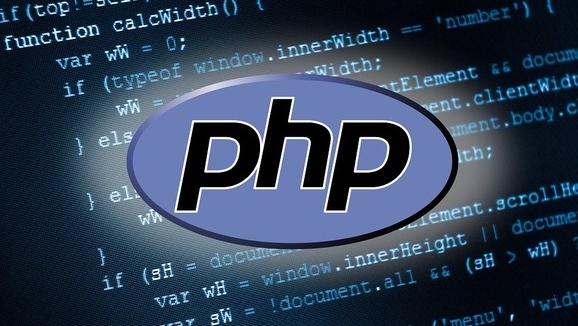To convert a SimpleXML object to a PHP array, use JSON as an intermediate format with json_encode() and json_decode(), handle XML attributes separately using SimpleXMLElement::attributes(), or build a custom recursive function for complex structures. 1) The json_encode() and json_decode() method converts the SimpleXML object into a JSON string and then decodes it into an array, but it omits attributes. 2) To preserve attributes, extract them manually using attributes() and integrate them into the array structure. 3) For deeply nested XML, a recursive function can traverse each node and construct a full associative array, offering greater control. Be mindful of edge cases such as empty nodes, repeated child elements, and namespaces, which may require special handling to ensure accurate conversion.

Sometimes you need to work with XML data in PHP, and SimpleXML is a handy tool for parsing and accessing XML content. However, if you want to manipulate that data more flexibly—like passing it to JavaScript or saving it to a database—you might find it easier to convert the SimpleXML object into a regular PHP array.

Here’s how to do it effectively.

Use json_encode() and json_decode()
One of the most common ways to convert a SimpleXML object to an array is by using JSON as an intermediate format. This method is clean and doesn't require writing a lot of custom code.
Here's how:

- Convert the SimpleXML object to a JSON string using
json_encode(). - Then decode that JSON string back into a PHP array using
json_decode()with the second parameter set totrue.
Example:
$xml = simplexml_load_string($xmlString); $array = json_decode(json_encode($xml), true);
This works well for most basic XML structures. Just be aware that attributes will get lost unless they’re explicitly handled.
Handle XML Attributes Separately
If your XML includes attributes and you want to preserve them in the array, you’ll need to extract them manually before converting.
You can use SimpleXMLElement::attributes() to access attribute values.
For example:
foreach ($xml->children() as $element) {
$attributes = $element->attributes();
// Do something with attributes
}Then include those in your array structure during manual building. The json_encode trick ignores attributes, so this extra step is needed when working with attribute-rich XML.
Build a Custom Recursive Function (for complex XML)
For deeply nested or irregular XML structures, you may need a recursive function to walk through each node and build a full associative array.
Here’s a basic version of such a function:
function xmlToArray($xml) {
$array = json_decode(json_encode($xml), true);
// If it's a single element with no children, return the value directly
if (is_scalar($array)) {
return (string)$xml;
}
// Process children recursively
foreach ($array as $key => $value) {
if (is_array($value)) {
$array[$key] = xmlToArray($xml->$key);
}
}
return $array;
}This isn’t perfect for every case but gives you more control. You can tweak it based on your specific XML structure.
Be Aware of Edge Cases
- Empty nodes may show up as empty strings or nulls.
- Multiple child elements with the same name are turned into numeric arrays automatically.
-
Namespaces can cause issues — if your XML uses them, make sure to handle them properly using
children()with the namespace URI.
These quirks can trip you up if you're not expecting them, especially when dealing with third-party XML feeds.
That’s basically how you convert a SimpleXML object to a PHP array. It’s not too hard, but there are enough gotchas to keep you on your toes.
The above is the detailed content of how to convert a simplexml object to a php array. For more information, please follow other related articles on the PHP Chinese website!

Hot AI Tools

Undress AI Tool
Undress images for free

Undresser.AI Undress
AI-powered app for creating realistic nude photos

AI Clothes Remover
Online AI tool for removing clothes from photos.

Clothoff.io
AI clothes remover

Video Face Swap
Swap faces in any video effortlessly with our completely free AI face swap tool!

Hot Article

Hot Tools

Notepad++7.3.1
Easy-to-use and free code editor

SublimeText3 Chinese version
Chinese version, very easy to use

Zend Studio 13.0.1
Powerful PHP integrated development environment

Dreamweaver CS6
Visual web development tools

SublimeText3 Mac version
God-level code editing software (SublimeText3)
 PHP Variable Scope Explained
Jul 17, 2025 am 04:16 AM
PHP Variable Scope Explained
Jul 17, 2025 am 04:16 AM
Common problems and solutions for PHP variable scope include: 1. The global variable cannot be accessed within the function, and it needs to be passed in using the global keyword or parameter; 2. The static variable is declared with static, and it is only initialized once and the value is maintained between multiple calls; 3. Hyperglobal variables such as $_GET and $_POST can be used directly in any scope, but you need to pay attention to safe filtering; 4. Anonymous functions need to introduce parent scope variables through the use keyword, and when modifying external variables, you need to pass a reference. Mastering these rules can help avoid errors and improve code stability.
 How to handle File Uploads securely in PHP?
Jul 08, 2025 am 02:37 AM
How to handle File Uploads securely in PHP?
Jul 08, 2025 am 02:37 AM
To safely handle PHP file uploads, you need to verify the source and type, control the file name and path, set server restrictions, and process media files twice. 1. Verify the upload source to prevent CSRF through token and detect the real MIME type through finfo_file using whitelist control; 2. Rename the file to a random string and determine the extension to store it in a non-Web directory according to the detection type; 3. PHP configuration limits the upload size and temporary directory Nginx/Apache prohibits access to the upload directory; 4. The GD library resaves the pictures to clear potential malicious data.
 Commenting Out Code in PHP
Jul 18, 2025 am 04:57 AM
Commenting Out Code in PHP
Jul 18, 2025 am 04:57 AM
There are three common methods for PHP comment code: 1. Use // or # to block one line of code, and it is recommended to use //; 2. Use /.../ to wrap code blocks with multiple lines, which cannot be nested but can be crossed; 3. Combination skills comments such as using /if(){}/ to control logic blocks, or to improve efficiency with editor shortcut keys, you should pay attention to closing symbols and avoid nesting when using them.
 How Do Generators Work in PHP?
Jul 11, 2025 am 03:12 AM
How Do Generators Work in PHP?
Jul 11, 2025 am 03:12 AM
AgeneratorinPHPisamemory-efficientwaytoiterateoverlargedatasetsbyyieldingvaluesoneatatimeinsteadofreturningthemallatonce.1.Generatorsusetheyieldkeywordtoproducevaluesondemand,reducingmemoryusage.2.Theyareusefulforhandlingbigloops,readinglargefiles,or
 Tips for Writing PHP Comments
Jul 18, 2025 am 04:51 AM
Tips for Writing PHP Comments
Jul 18, 2025 am 04:51 AM
The key to writing PHP comments is to clarify the purpose and specifications. Comments should explain "why" rather than "what was done", avoiding redundancy or too simplicity. 1. Use a unified format, such as docblock (/*/) for class and method descriptions to improve readability and tool compatibility; 2. Emphasize the reasons behind the logic, such as why JS jumps need to be output manually; 3. Add an overview description before complex code, describe the process in steps, and help understand the overall idea; 4. Use TODO and FIXME rationally to mark to-do items and problems to facilitate subsequent tracking and collaboration. Good annotations can reduce communication costs and improve code maintenance efficiency.
 Learning PHP: A Beginner's Guide
Jul 18, 2025 am 04:54 AM
Learning PHP: A Beginner's Guide
Jul 18, 2025 am 04:54 AM
TolearnPHPeffectively,startbysettingupalocalserverenvironmentusingtoolslikeXAMPPandacodeeditorlikeVSCode.1)InstallXAMPPforApache,MySQL,andPHP.2)Useacodeeditorforsyntaxsupport.3)TestyoursetupwithasimplePHPfile.Next,learnPHPbasicsincludingvariables,ech
 How to access a character in a string by index in PHP
Jul 12, 2025 am 03:15 AM
How to access a character in a string by index in PHP
Jul 12, 2025 am 03:15 AM
In PHP, you can use square brackets or curly braces to obtain string specific index characters, but square brackets are recommended; the index starts from 0, and the access outside the range returns a null value and cannot be assigned a value; mb_substr is required to handle multi-byte characters. For example: $str="hello";echo$str[0]; output h; and Chinese characters such as mb_substr($str,1,1) need to obtain the correct result; in actual applications, the length of the string should be checked before looping, dynamic strings need to be verified for validity, and multilingual projects recommend using multi-byte security functions uniformly.
 Quick PHP Installation Tutorial
Jul 18, 2025 am 04:52 AM
Quick PHP Installation Tutorial
Jul 18, 2025 am 04:52 AM
ToinstallPHPquickly,useXAMPPonWindowsorHomebrewonmacOS.1.OnWindows,downloadandinstallXAMPP,selectcomponents,startApache,andplacefilesinhtdocs.2.Alternatively,manuallyinstallPHPfromphp.netandsetupaserverlikeApache.3.OnmacOS,installHomebrew,thenrun'bre






